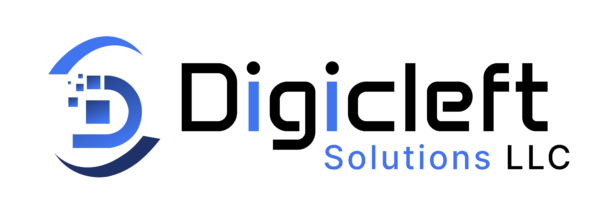
What Is LLMOps?
Let’s face it—Large Language Models (LLMs) are no longer just experimental playgrounds for researchers. They’re being plugged into real products, real pipelines, and real businesses. That’s where LLMOps comes into play.
Think of Large Language Model Operations as the next-gen DevOps but tailored specifically for managing the lifecycle of language models—like ChatGPT, Claude, or Llama—from data ingestion to deployment, and everything in between.
Why Developers Should Care Right Now
You might be asking: “Is this another tech buzzword I can ignore?” Nope. LLMs are invading our tooling, workflows, and products faster than ever. If you don’t get ahead now, you risk falling behind in one of the biggest paradigm shifts since cloud computing.
The Rise of LLMs in Software Development
How Language Models Are Becoming Tools, Not Just Toys
Remember when autocomplete was a cool IDE feature? Now, we have models that write full functions, generate test cases, and even write blog posts (hello 👋). LLMs are evolving into digital team members.
Real-World Applications of LLMs in Dev Work
- Auto-generating documentation
- Code review and linting suggestions
- Infrastructure-as-code scripting
- Customer support bots
- Natural language queries on your codebase
From DevOps to LLMOps
What DevOps Solved—And What It Didn’t
DevOps bridged the gap between development and operations. It helped with automation, deployment, and scaling. But DevOps never had to deal with probabilistic outputs or prompt engineering.
Why DevOps Alone Isn’t Enough in the AI Era
DevOps assumes you know exactly what your app will do when deployed. With LLMs? Not quite. Outputs vary, hallucinations happen, and models evolve. This demands a new approach—enter LLMOps.
Understanding Large Language Model Operations
Definition and Scope of LLMOps
LLMOps (Large Language Model Operations) refers to the set of practices and tools to manage the end-to-end lifecycle of LLMs, including data curation, training, fine-tuning, deployment, testing, monitoring, and iteration.
Core Components
- Data Pipelines: Structured, clean, and safe data is a must.
- Training/Finetuning: Adapting base models to fit use cases.
- Prompt Engineering: The new form of programming logic.
- Monitoring: Constantly watching for drift and hallucination.
- CI/CD: For model versioning and updates.

LLMOps vs MLOps
While both manage ML systems, LLMOps deals with language, prompts, context windows, and human-like responses—far more dynamic and unpredictable than traditional models.
LLMOps Lifecycle Breakdown
Data Collection & Curation
The better the input, the smarter the output. Garbage in, garbage out applies more than ever.
Model Training & Fine-Tuning
Fine-tuning helps align a general-purpose model to your business goals—whether that’s tone, knowledge, or behavior.
Evaluation & Validation
Accuracy isn’t enough—you’re also validating tone, coherence, and even ethics. Traditional metrics won’t cut it.
CI/CD for LLMs
Automation pipelines must include:
- Prompt versioning
- Model artifact tracking
- Feedback loop integration
Monitoring and Feedback Loops
Use real-time user feedback, model logs, and observability tools to catch hallucinations, offensive outputs, or performance decay.
Key Tools in the LLMOps Toolkit
Vector Databases
Essential for retrieval-augmented generation (RAG). Examples: Pinecone, Weaviate, Qdrant.
LLM Frameworks and APIs
LangChain, LlamaIndex, Hugging Face, and OpenAI SDKs are the new essential dev tools.
Observability and Debugging Tools
Helicone, PromptLayer, and WhyLabs help you track performance and behavior at scale.
Prompt Engineering Platforms
Tools like PromptOps and PromptFlow allow A/B testing, versioning, and debugging of prompts—welcome to 2025.
Challenges Developers Face in LLMOps
Model Drift and Performance Decay
LLMs degrade over time due to evolving input patterns. Constant tuning and observation are key.
Data Sensitivity and Privacy
LLMs trained on sensitive inputs can leak data if not carefully sandboxed. Guardrails matter.
Prompt Dependency and Output Variability
Minor changes in prompts can drastically change output. Stability is a real issue.
Best Practices for Developers in LLMOps
Version Control for Prompts and Models
Git isn’t just for code anymore—track your prompts and their versions like you would your APIs.
Structured Logging and Monitoring
Log outputs, token usage, errors, and anomalies. Set thresholds for retraining triggers.
Automating Fine-Tuning and Deployment Pipelines
Don’t fine-tune manually every time. Use automation tools to retrain based on data feedback loops.
Career Shifts: The New Skillset Needed
From DevOps Engineer to LLMOps Specialist
Expect new roles like:
- PromptOps Engineer
- LLM Performance Analyst
- AI Workflow Architect
AI Fluency and Prompt Engineering
Understanding how LLMs “think” is more valuable than learning a new JS framework in 2025.
The Role of Domain Knowledge
Want to build LLMs for healthcare? Finance? Legal? Deep domain knowledge is key for prompt crafting and model alignment.
LLMOps in Action: Real-World Examples
Case Study: Customer Support Automation
A retail company deployed an LLM to handle Tier 1 support. Large Language Model Operations was used to track output quality, gather user feedback, and iterate prompts—reducing ticket volume by 40%.
Case Study: Code Generation at Scale
A SaaS company used fine-tuned LLMs for internal script generation, reducing manual engineering work by 30%. Large Language Model Operations pipelines ensured consistent and reliable outputs.
How LLMOps Impacts the Software Development Lifecycle
Changes in Testing and QA
Traditional tests don’t work here. You’ll need human-in-the-loop review cycles, semantic evaluations, and output scoring systems.
Shifts in Team Collaboration and Tooling
Expect tighter collaboration between product managers, developers, and AI specialists. Think: prompt reviews instead of just code reviews.
Security and Ethics in LLMOps
Bias, Hallucination, and Responsible AI
No, your LLM shouldn’t give financial advice—unless it’s trained, fine-tuned, and monitored with extreme precision and care.
Data Governance and Compliance
GDPR, HIPAA, and other regulations now apply to what your LLM knows and says. Your compliance team needs to be in the loop.
Future of LLMOps
Multi-Agent Systems and Autonomous Pipelines
Think multiple LLMs talking to each other, coordinating tasks, debugging outputs—welcome to swarm intelligence.
Role of LLMOps in AGI Evolution
If AGI happens, Large Language Model Operations will be the scaffolding it’s built on. Trust, safety, and operational control will matter more than ever.
Conclusion
LLMOps isn’t just a trend—it’s a tectonic shift. As LLMs become the brains behind everything from chatbots to code generators, knowing how to manage them is now as essential as knowing Git or Docker. Whether you’re a developer, data engineer, or DevOps veteran, embracing LLMOps means future-proofing your skills and your stack.
FAQs
Q1: What’s the difference between DevOps, MLOps, and LLMOps?
A: DevOps handles software deployment; MLOps manages traditional ML pipelines; Large Language Model Operations focuses on operationalizing large language models with attention to prompts, behavior, and output quality.
Q2: Do I need ML knowledge to get into LLMOps?
A: Basic understanding helps, but many roles focus on prompts, deployment, and monitoring—skills most developers can learn.
Q3: Which programming languages are best for LLMOps?
A: Python dominates due to its libraries and frameworks, but JavaScript and Rust are gaining popularity in edge use cases.
Q4: Can startups benefit from LLMOps?
A: Absolutely. It enables faster AI integrations, better control over output, and improved scalability.
Q5: What are the top open-source tools for LLMOps?
A: LangChain, LlamaIndex, BentoML, Weights & Biases, and PromptLayer are all worth exploring.
Digicleft Solutions LLC empowers startups and enterprises to build smarter, faster AI-powered applications with cutting-edge Large Language Model Operations solutions. Want to future-proof your tech stack? Schedule a free strategy call with our AI experts today.


